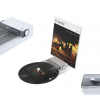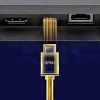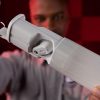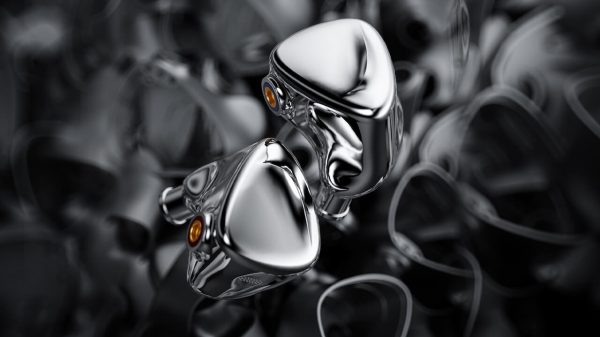After more than a decade of innovation in the high-end headphone and IEM categories, it is interesting to take stock of the smaller brands that are still around and prospering. FiiO were part of the first wave of high-end Chinese portable audio products; the original FiiO X1 became one of the first legitimate competitors to the iPod when it was introduced and gave the brand some credibility.
After that success, the company began manufacturing DAC/amplifiers and that progressed into DAPs and IEMs. The first generation of IEMs were a collaboration with Dunu (another Chinese first wave company), but the subsequent generations have been internal designs along with the manufacturing.
In more recent years, Fiio has pushed higher into the middle of the market with products that compete with Sony in the DAP category, and brands like Burson in the desktop vertical.
The IEM lineup has a number of products that fall into the budget range, but the flagship models all retail for $500 to $700 per pair.
The FA range utilize balanced armatures that were designed by Knowles and offer very impressive performance for the money.
The $339.99 USD asking price is most certainly mid-tier in the high-end IEM category but there is a lot of value to found with these.



The Skinny
FiiO has never skimped on its packaging and the FA7S are no exception; the well-appointed storage case includes 2 layers of accessories that you will definitely need to experiment with. The top layer houses the ear pieces in a foam surround and pelican style hard carrying case.
The lower level includes 12 sets of tips and adapters for the modular cable system. There are 4 different styles of ear tips provided and three adapters for 2.5mm, 3.5mm, and 4.4mm sources.
The pelican case is well sized to hold the earpieces and cable and protect them during travel, and the foam block that holds the tip selection makes it easy to travel with and not lose those pieces. The quality of the accessories is rather unusual at this price point and you certainly don’t get this from the competition.

The ear pieces are manufactured from 316L medical grade stainless steel using a Sintered metal process; powdered metal is pressed to shape and then heated until it just reaches the melting point to bond the powder into a solid object.
Sintering has become a popular way to make precision parts because it requires less clean-up than injection molding or casting and wastes far less material than milling from bar stock.
The shells are barrel shaped with an MMCX housing on the top and the nozzle exiting middle front. The face plates have a “Y”- shaped slot with a colored screen behind it that indicates left/right and does serve as a vent for the HODVTEC vented balanced armatures used inside.
Despite being made entirely of stainless steel, I didn’t find the FiiO FA7S IEMs to be markedly heavier than other aluminum or magnesium shelled models. The overall weight is 8.4 grams and depending on the shape of your inner ear, the inner shell might barely touch it.
The size is on the larger side so those with small ears will want to audition before purchase and whether you have small ears or not — some tip rolling is essential to get the best fit.

Once I found the best tip for my ears, the FA7s was comfortable for long listening sessions.
Another plus — the passive isolation once you find the right tip is excellent for an IEM of this kind. Get the tip correct and the seal will be very effective at isolating you and improving the sound quality.
The aesthetic depends on which color you select because the FA7S are available in either a silver or black gold theme.
Cable
Some manufacturers save some money in this department and offer a cable that is rather marginal in its construction; FiiO take the opposite approach and have done something unique with a new modular design that allows the user to swap 3.5mm, 2.5mm, and 4.4mm jacks for different sources.


The housing on the cable itself has 4 female ports that the adapter pins mate with and then the outer metal housing screws onto the jack to hold everything in proper alignment.
The jacks are keyed so they cannot be installed incorrectly, and the system is both easy to use and very positive in its execution. The cable itself is an 8-wire braid from the jack up to the splitter. There is a chin slider above the splitter and all the hardware (jack, splitter, slider) have a matching gun-metal gray look.
Above the splitter, the wires are 4-wire braids up to pre-formed hooks and MMCX connectors in clear housings. The connectors have a red or blue band at the base to help with indexing.
The overall design is very high quality and unique because of the modular connectivity options; the only other option that I prefer is offered by Dunu which utilizes a 90º jack as opposed to the straight jack used here. The jack is relatively short so there is not a lot of stress put on the connector at the source.

Kishkas
The FA7S and the original FA7 are similar in this area; the IEMs are a six-driver BA setup configured in a 2+2+2 orientation and both utilize a rather advanced 3-way crossover.
A pair of Knowles HODVTEC 31618 balanced armature drivers are responsible for the bass frequencies, whilst a pair of 33518 BA drivers handle the top end, and a pair of custom BA drivers are placed in the center and handle the midrange.
The low and midrange BA’s have a single outlet port for the pair, while the 33518s are separate — which results in 4 sound bores that feed the nozzles.
The rear vents are functional as the HODVTEC drivers are ported and need the same breathability as a dynamic driver.
The nominal impedance is 18 ohms with a sensitivity of 111dB/mW which puts the FA7S into a class of devices that work well with moderate power sources. I had zero issues driving the FA7S using either the Cayin RU6 or Questyle M12 Dongle DACs.
I really enjoyed the pairing of the FA7S with the FiiO M11 Plus as well for those who wish to pair the IEMs with a FiiO DAP.

Sound
The sound quality is somewhat atypical for an IEM in this price range and that requires a lot of explanation.
After a few weeks of listening, the FiiO FA7S don’t really offer a “V” or “U” pattern; the low end is rather warm and the treble is slightly bright sounding. The midrange isn’t recessed either which gives the IEM a more balanced sounding presentation.
The bass response is somewhat typical of a balanced armature design; it does not deliver earth shattering impact and also doesn’t extend as far down in comparison to some dynamic drivers. We measured and found that the bass begins to roll-off around 35Hz.
Clarity and texture are the main attributes in the low end, along with a rather quick and articulate presentation. The ported balanced armature does result in greater impact than some other balanced armature designs and one will notice that the bass is certainly warmer sounding.
The FA7S won’t please bass heads who will bemoan the lack of impact, but it will appeal to those who place greater value on timbre, detail, texture, and clarity which are well above average at the asking price.
FiiO decided to go with stock drivers for the low end and treble, but the newly designed custom midrange armatures really deliver when it comes to clarity, detail, and overall resolution.
There is no bleed from the upper bass into the lower midrange which results in very clean sounding vocals with a lot of texture. Male and female vocals are presented with the same degree of emphasis and neither are forward of the rest of the mix.

Guitar notes have plenty of growl and excellent energy, but I wouldn’t declare that these are ideal rock IEMs. There is a distinct lift in the upper midrange that benefits vocals but if the recording is slightly forward sounding — too much of a good thing skews the tonal balance and the presentation can become somewhat aggressive sounding.
The lower treble remains relatively even with the upper midrange but then experiences a drop and the result is a treble range with sufficient energy that is never fatiguing.
However, the flip-side is that this is not an IEM to “crank up” because the treble will become hard or strident at higher volume levels; it was noticeable that the treble loses its focus as you feed more power into the IEMs.
Moderate volume levels are the best option with the FiiO and more than a few users have reported the same results. Jazz and classical music are far more satisfying with the FA7S in comparison to metal or EDM.
The soundstage is very good but the separation of the drivers into individual sound bores results is a very unique presentation; the low end is centered and fixed at a moderate depth, whilst the midrange has greater left to right spread and certainly comes across as more intimate.
The treble has very good depth and adequate width and height which certainly has an impact on the overall soundstage; small ensembles and pop music can be very engaging and even at moderate listening levels.
Layering and stereo separation are generally rather consistent and imaging can be rather precise depending on the recording. I never found there to be any significant overlap of instruments and movements are rather easily tracked.

Conclusion
The original FiiO FA7 were not my favorite IEMs; the FiiO FD5 offer a more visceral listen that is better suited for rock, blues, and EDM. The biggest difference between the two is that the FA7S sounds far more balanced overall with better clarity and detail.
The top end is detailed and airy — but one really needs to watch the volume levels to keep things under control.
Is it fair to say that the FiiO FA7S favor chamber music, pop, and jazz over other genres of music?
I think that is the case from the perspective that they don’t deliver enough low end impact to give other genres the foundation listeners might expect and they sound far more engaging at lower listening levels.
The build quality is excellent, and the supplied accessories are second to none.
It is a personal decision based on the types of music that one enjoys and how they listen.
Where to buy: $339.99 at Amazon | Audio46


































